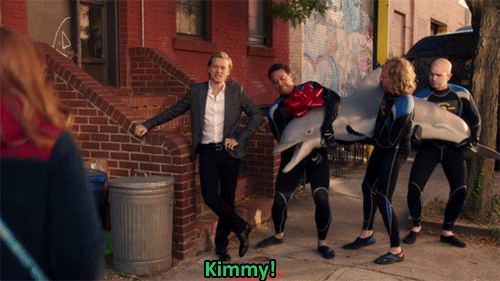There are lost children at the bottom of the ocean, and the seaQuest team is on it … a few years after the fact, and only because it’s time to drop the subsea munitions depot that the kids are trapped in after their parents were all lost on a mission into the abyss. Because it’s a navigation hazard or something.
This is a science-light episode. The kids are rescued, but one doesn’t want to come willingly. Captain Bridger goes on a hunt through the depot to find the last kid, who’s packing a wicked spear gun and favors bringing the hunt to the ball pit. Seriously, there’s a ball pit in this submerged weapons cache full of kids.
Meanwhile, on the seaQuest, Lucas is awkwardly creeping on a 15-year-old girl rescued from the depot. The whole plot line is deeply uncomfortable.
Here’s a cool thing: Lucas has a cache of music to share with his new friend. On actual military vessels, particularly submarines, a lot of technology is restricted. For example, on nuclear submarines, you can’t bring your kindle or iPod—any non-secure device, which could potentially connect to the submarine’s network or be used to move files off the sub, is forbidden—so the Navy has invested quite a bit into the awkwardly named NeRD, or Navy eReader Device. The NeRD is a $3,000 secure Kindle clone that comes pre-loaded with 300 titles. The high price of the device includes the licenses for those books, including, as one buddy of mine described, “Way too many Tom Clancy novels.”
The Navy also has a program to provide mariners with early releases of new movies, since you can’t really pop over to the theatre on a 6-month silent deployment. So some poor submariner was likely disappointed by Batman v Superman long before you were. Though I can’t directly confirm this, it is unlikely that mini-disks have ever been allowed on US military submarines.
Bob Ballard appears at the end to talk about surviving in deep sea habitats, pointing out that people have lived longer in space than under the ocean. Even with Fabian Cousteau’s recent attempt to break his grandfather’s record, the longest anyone has spent in a sub-sea habitat is barely 31 days, and for good reason. These environments are pretty hard on the human body. The high humidity and inability to ever completely dry off leads to lots of rashes and fungal infections. Living at pressure can lead to decompression illness and requires a fairly long decompression cycle before you can return to the surface. Space may be harder to get to, but living underwater is lot tougher. Incidentally, NASA astronauts do a lot of their training at underwater stations like Aquarius.
Speaking of kids trapped alone in a self-contained habitat for several years, perhaps you have, like me, wondered where Darwin the dolphin goes when he’s not in on the action. Oh, I don’t know, maybe to visit his super cool friend in New York?
I’ve been staring at this giant animatronic dolphin for hours, and I’m almost positive it’s Darwin. Now, I’m not saying Unbreakable Kimmy Schmidt and seaQuest DSV share the same universe … I’m saying Unbreakable Kimmy Schmidt and seaQuest DSV share the same universe contemporaneously.
Andrew Thaler is a deep-sea ecologist and conservation biologist who runs the marine science and conservation blog Southern Fried Science. You can support hisvarious and sundry ocean outreach projects (like this one) on Patreon or check out his maritime-y science fictions novels. Follow him on Twitter, where he’s happy to answer question about deep sea ecology and exploration.
—The Mary Sue has a strict comment policy that forbids, but is not limited to, personal insults toward anyone, hate speech, and trolling.—
Follow The Mary Sue on Twitter, Facebook, Tumblr, Pinterest, & Google+.










Published: Apr 30, 2016 11:00 am